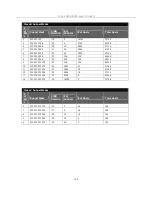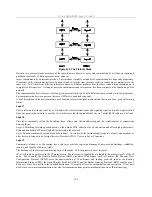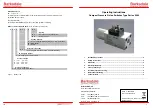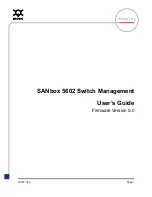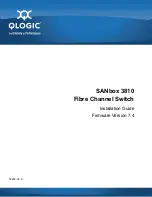
D-Link DES-3326S Layer 3 Switch
Layer 4
This layer, known as the transport layer, establishes the communication path between user applications and the network
infrastructure and defines the method of communicating. TCP and UDP are well-known protocols in the transport layer.
TCP is a “connection-oriented” protocol, and requires the establishment of parameters for transmission prior to the exchange
of data. Web technology is based on TCP. UDP is “connectionless” and requires no connection setup. This is important for
multicast traffic, which cannot tolerate the overhead and latency of TCP. TCP and UDP also differ in the amount of error
recovery provided and whether or not it is visible to the user application. Both TCP and UDP are layered on IP, which has
minimal error recovery and detection. TCP forces retransmission of data that was lost by the lower layers, UDP does not.
Layer 7
This layer, known as the application layer, provides access to either the end user application software such as a database.
Users communicate with the application, which in turn delivers data to the transport layer. Applications do not usually
communicate directly with lower layers. They are written to use a specific communication library, like the popular WinSock
library.
Software developers must decide what type of transport mechanism is necessary. For example, Web access requires reliable,
error-free access and would demand TCP, Multimedia, on the other hand, requires low overhead and latency and commonly
uses UDP.
TCP/IP
The TCP/IP protocol suite is a set of protocols that allow computers to share resources across a network. TCP and IP are
only two of the Internet suite of protocols, but they are the best known and it has become common to refer the entire family
of Internet protocols as TCP/IP.
TCP/IP is a layered set of protocols. An example, such as sending e-mail, can illustrate this. There is first a protocol for
sending and receiving e-mail. This protocol defines a set of commands to identify the sender, the recipient, and the content
of the e-mail. The e-mail protocol will not handle the actual communication between the two computers, this is done by
TCP/IP. TCP/IP handles the actual sending and receiving of the packets that make up the e-mail exchange.
TCP makes sure the e-mail commands and messages are received by the appropriate computers. It keeps track of what is
sent and what is received, and retransmits any packets that are lost or dropped. TCP also handles the division of large
messages into several Ethernet packets, and makes sure these packets are received and reassembled in the correct order.
Because these functions are required by a large number of applications, they are grouped into a single protocol, rather than
being the part of the specifications for just sending e-mail. TCP is then a library of routines that application software can use
when reliable network communications are required.
IP is also a library of routines, but with a more general set of functions. IP handles the routing of packets from the source to
the destination. This may require the packets to traverse many different networks. IP can route packets through the
necessary gateways and provides the functions required for any user on one network to communicate with any user on
another connected network.
The communication interface between TCP and IP is relatively simple. When IP received a packet, it does not know how
this packet is related to others it has sent (or received) or even which connection the packet is part of. IP only knows the
address of the source and the destination of the packet, and it makes its best effort to deliver the packet to its destination.
The information required for IP to do its job is contained in a series of octets added to the beginning of the packet called
headers. A header contains a few octets of data added to the packet by the protocol in order to keep track of it.
Other protocols on other network devices can add and extract their own headers to and from packets as they cross networks.
This is analogous to putting data into an envelope and sending the envelope to a higher-level protocol, and having the higher-
level protocol put the entire envelope into it’s own, larger envelope. This process is referred to as encapsulation.
Many levels of encapsulation are required for a packet to cross the Internet.
Packet Headers
TCP
Most data transmissions are much longer that a single packet. The data must then be divided up among a series of packets.
These packets must be transmitted, received and then reassembled into the original data. TCP handles these functions.
TCP must know how large a packet the network can process. To do this, the TCP protocols at each end of a connection state
how large a packet they can handle and the smaller of the two is selected.
195












